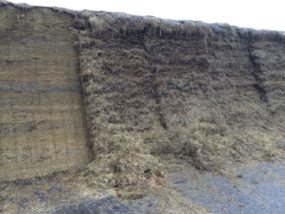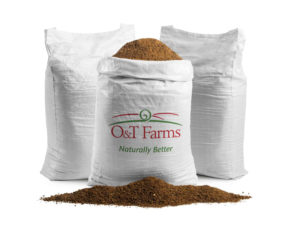Winter is here and with it comes colder temperatures, wet or icy ground and snow in some areas. Despite the changing weather conditions, you still need to get work done, and farm tire maintenance is crucial to staying productive, no matter the weather.
Regardless of where you live, winter brings challenges. In the north, it snows. In the south, it rains. But livestock still needs to be fed. Snow needs to be moved or fieldwork finished. You need your tires to keep up throughout the season.
Taking steps to safeguard your tires from harsh winter weather and conditions can help you avoid needing replacement tires come spring. Here are four practical tips to help you make the most of your farm tires and equipment this winter.
Tip 1: Maintain tire pressure when temperatures drop
Regularly check and adjust your tire air pressure to extend tire life and carry heavy loads efficiently. Checking tire pressure in the winter is especially important since it is directly related to temperature. As temperatures rise, so does tire inflation pressure and vice versa.
Check your tire pressure daily or weekly, depending on your equipment usage. This helps avoid underinflation or overinflation, which can damage the tire and affect performance.
Tip 2: Be cautious of rough, frozen ground
Take extra care driving over rutted and rough frozen ground and stubble, especially for livestock operations and when clearing snow.
When temperatures drop, mud can freeze into hard clumps, and stubble gets even harder. Driving over these is like driving over a sharp rock in the field. These frozen obstacles can cause punctures or breaks in your tires.
Whenever possible, minimize driving over rough surfaces and smooth out main driving paths to protect your tires from sharp, frozen debris.
Tip 3: Safeguard your tires during winter storage
For equipment that won’t see regular use during the winter, keep tires in good condition with proper storage. If possible, store equipment inside. In colder temperatures, tire rubber stiffens and its elasticity stops working as usual. Instead of stretching and relaxing, it becomes brittle and can crack. When left outside in snow and ice, tires are more prone to cracking.
For equipment in winter storage, adjust tire inflation pressure to avoid finding a flat tire come spring. Due to a process called permeation, a tire will typically lose around 1 pound per square inch (psi) per month. To account for this natural, slow loss of psi over time, regularly check the tire pressure of your tires in storage and adjust to account for this change.
Tip 4: Optimize your tires for winter conditions
Winter across the country can create conditions that challenge tire traction. Tires built for fieldwork might not perform well in snow and ice. Wet ground from winter rains can reduce a tractor's traction in the field. If you need to put your equipment to work, these tips can help make them more efficient.
- Adjust a tire's footprint: Wet ground can heighten soil compaction and rutting while reducing a tractor’s traction. Ensure your tire inflation pressure is optimized for the tractor's weight. Properly inflated tires allow tractors to create an ideal footprint, spreading the machine’s weight over a larger area to minimize soil compaction and enhance traction.
- Add weight: Carefully add weight and optimize your tire pressure to the new weight to get some extra grip for winter work. Adding weight to your equipment can help improve traction on icy, snowy or wet ground; prevent slipping and help maintain stability.
- Use tire chains: Tire chains can be a good option in winter conditions by providing extra traction on icy surfaces. Tire chains can give your equipment the extra grip it needs in slippery conditions. Work with your local tire dealer and experts to ensure you are getting the correct chains for your tires and installing them correctly to avoid unnecessary damage.









